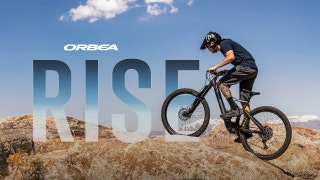Featured Brands
Recommended Products
WINTER20
Get free shipping, on most items, with your $50 purchase today! Same day shipping on most orders if placed by 3pm PST.
PLEASE NOTE:
This offer is only available to physical shipping addresses in the 48 continental United States (no PO Boxes), and some exclusions apply.
Oversize Charges
Some large and/or heavy items are subject to additional oversize charges that are separate from standard shipping costs.
Bike Build Process
All bikes are built, tested, tuned, and ready to ride upon shipment. The bike build process typically takes 2-3 days to complete depending on the bike model and the complexity of the build.
Stock Status
Orders for in-stock items placed by 3PM PST usually ship on the same day. Orders that include special-order or backordered items may be subject to shipping delays depending on product availability. Refer to estimated delivery times in cart when selecting shipping options.

Our Gear Advisors are Ready to Help.
FREE SHIPPING over $50*
To understand the function of bike freewheels it helps to think back to your youth. Your first couple bikes likely had coaster brakes, meaning to slow down you simply pedaled backwards. But then you made the jump to a bike that had a freewheel — and handbrakes to slow you down. Now when you stopped pedaling or pedaled backwards, your bike made that unmistakable clicking noise that signified you had graduated to a “real” bike. But what exactly was the difference?
Essentially bike freewheels are the mechanism within your rear wheel’s hub (but not the front wheel’s hub) that locks in place when you pedal forward, forcing that wheel to be driven by the chain that is engaging a sprocket on your cassette, which all adds up to forward motion of you and your bike. But unlike that old coaster brake-equipped rig, on a bike with a freewheel when you pedal backwards or don’t pedal at all, your bike freewheel spins freely while you joyfully coast down the road or trail.
It also helps to understand the various vernacular associated with bike freewheels, specifically that it is usually built into the rear wheel’s hub, which together is called the freehub. The freehub in turn interfaces with the cassette, which is a set of gears (or cogs) that has no moving parts and slides on to the hub where it is held in place with a lockring.
Conversely, freewheels typically screw onto the hub without the need for tools. Then as you pedal your bike forward, your pedaling secures the freewheel onto the hub. To remove a freewheel necessitates a tool, usually called a freewheel puller or extractor, which grabs the core of the freewheel and pulls it off. If you need assistance making your purchase, please give one of our expert Gear Advisors a call today at 951-234-7554
SHOP NOW
SHIP ALMOST ANYTHING & SAVE
SHOP NOW
SHOP NOW
SHOP NOW




